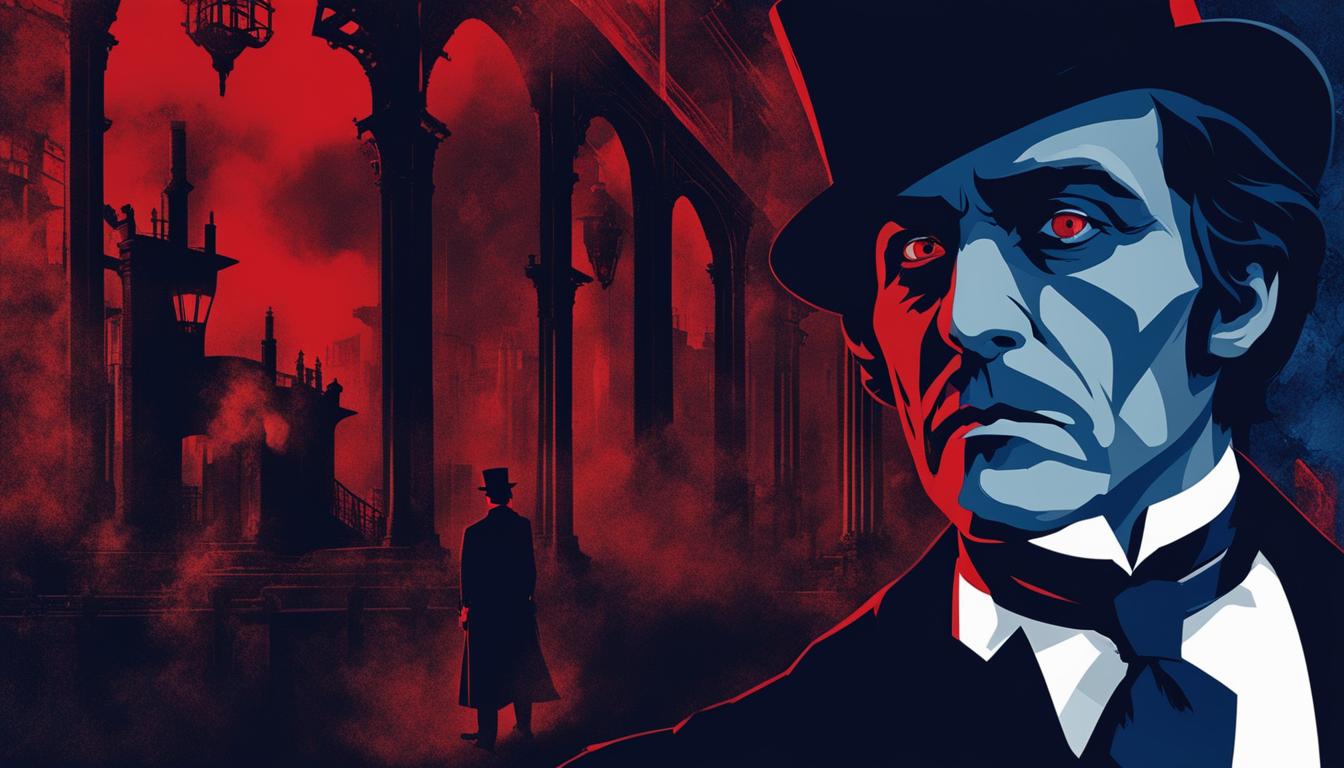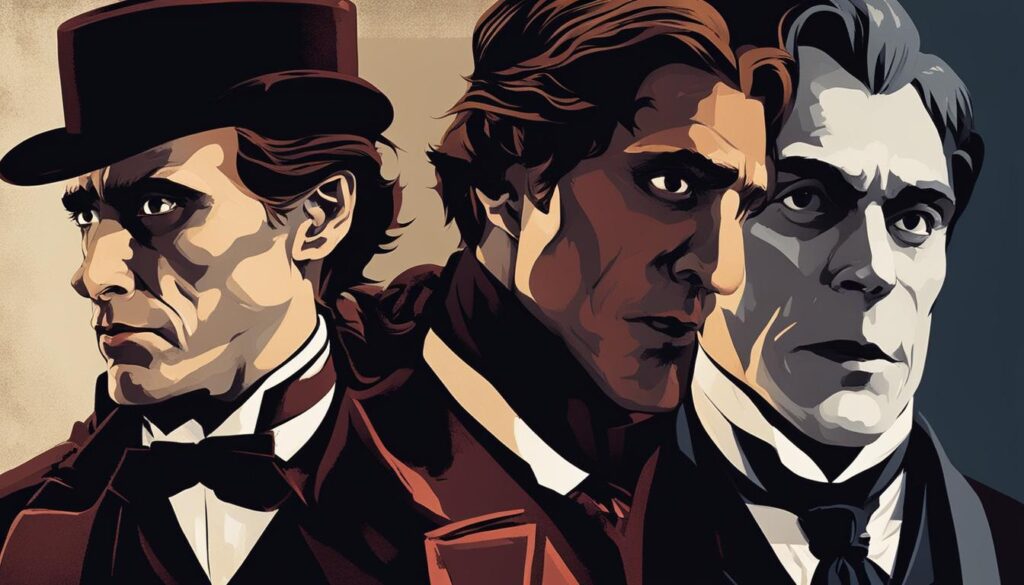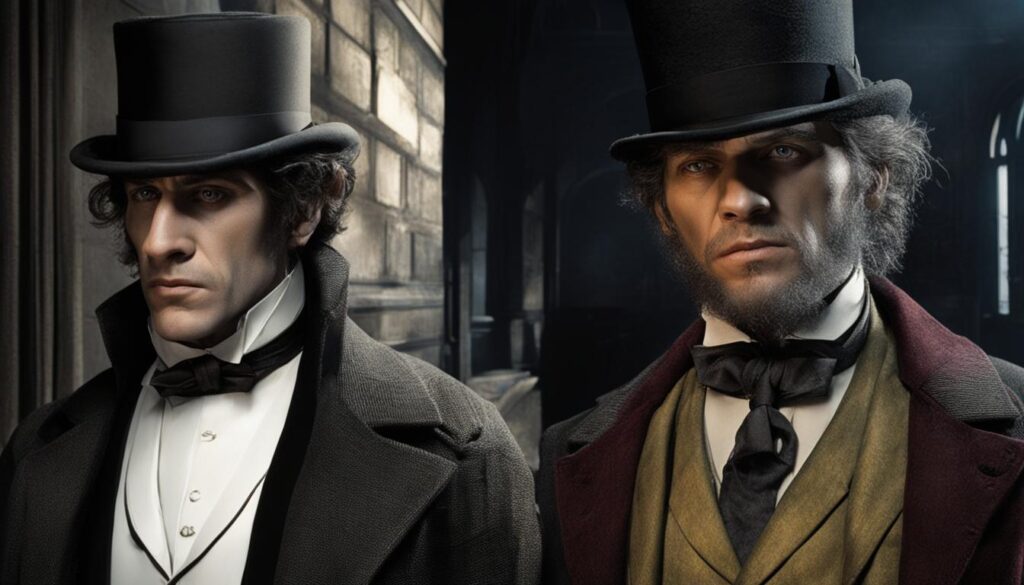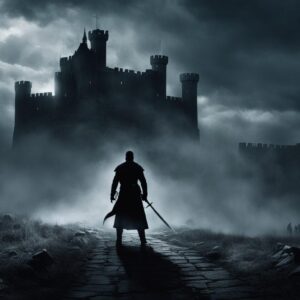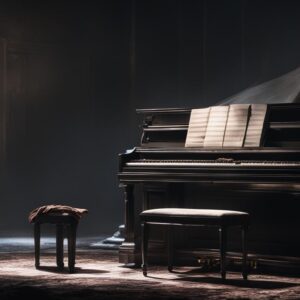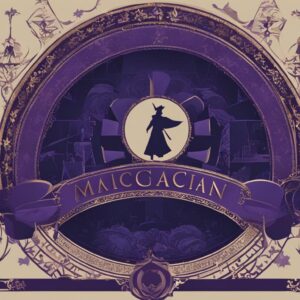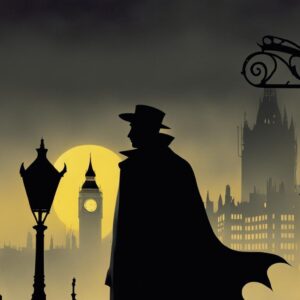In the world of classic literature, few works have captivated readers and influenced the horror genre as deeply as Robert Louis Stevenson’s Dr. Jekyll and Mr. Hyde. Published in 1886 during the Victorian era, this psychological thriller explores the dual personality of Dr. Jekyll and his sinister alter ego, Mr. Hyde. Now, let’s peel back the layers and delve into the enchanting world of the 1920 adaptation of this literary masterpiece.
Key Takeaways:
- The 1920 adaptation of Dr. Jekyll and Mr. Hyde is a classic literary adaptation that shaped the horror genre.
- This psychological thriller delves into the themes of dual personality, transformation, and the eternal battle between good and evil.
- Set in the Victorian era, this adaptation showcases the psychological effects of Dr. Jekyll’s scientific experimentation.
- Despite its low budget, the film incorporates traditional horror elements and creates an atmospheric and gritty visual experience.
- The 1920 adaptation has had a lasting impact, paving the way for future adaptations, sequels, and modern interpretations.
The Low-Budget American Adaptation of 1920
The 1920 adaptation of Dr. Jekyll and Mr. Hyde was a low-budget American production that aimed to bring the classic story to life. Despite its limited resources, this film managed to incorporate traditional horror elements, setting it apart from other silent versions of the tale.
Unlike the more acclaimed Barrymore version, this adaptation focused on capturing the essence of the story in a cost-effective manner. While it may not have had the star power or elaborate sets, it made up for it by embracing the classic elements of horror that had been popularized in the genre.
“The low-budget American adaptation of Dr. Jekyll and Mr. Hyde was a commendable effort to capture the essence of the story in a cost-effective manner.” – Film Critic
Despite being overshadowed by other adaptations, this low-budget American version deserves recognition for its attempt to bring this iconic story to life and contribute to the evolution of the horror genre.
| Comparison | Low-Budget American Adaptation (1920) | Barrymore Version |
|---|---|---|
| Production Budget | Low budget | Higher budget |
| Main Focus | Traditional horror elements | Romantic temptation |
| Critical Reception | Mixed reviews | Acclaimed performance |
The Plot and Characters of the 1920 Adaptation
In the 1920 adaptation of Dr. Jekyll and Mr. Hyde, the story is set in America, deviating from the original Victorian London setting. The film centers around Dr. Jekyll, a scientist fascinated by the boundary between life and death. He embarks on a psychological experiment to separate the good and evil in humans, which ultimately leads to his transformation into Mr. Hyde.
As Mr. Hyde, Jekyll goes on a murderous spree, targeting random victims. This adaptation highlights the internal struggle between Jekyll and Hyde, showcasing the psychological effects of their transformation. Additionally, Jekyll’s fiancée becomes disillusioned with his obsession and leaves him for his friend, adding to the emotional turmoil depicted in the film.
Sheldon Lewis delivers a captivating performance as both Dr. Jekyll and Mr. Hyde, effectively portraying the contrasting personalities and the darkness within. Victorian London may have been exchanged for an American setting, but the themes of duality and the consequences of scientific experimentation remain at the core of the story.
Table: Main Characters in the 1920 Adaptation
| Character | Actor |
|---|---|
| Dr. Jekyll / Mr. Hyde | Sheldon Lewis |
| Fiancée | Nita Naldi |
| Friend | Arthur Edmund Carewe |
| Random Victims | Varying actors |
In this adaptation, Sheldon Lewis’ performance as both Dr. Jekyll and Mr. Hyde remains a standout, successfully capturing the internal struggle and the dichotomy of the characters. The depiction of Jekyll’s fiancée and friend adds depth to the storyline, emphasizing the emotional impact of the experiment’s consequences. The adaptation’s portrayal of the murders committed by Mr. Hyde adds a chilling element to the narrative, heightening the suspense and horror.
While the setting may have changed, the 1920 adaptation of Dr. Jekyll and Mr. Hyde remains true to the original novella’s exploration of human nature and the repercussions of tampering with scientific boundaries.
Comparison to Other Adaptations
When comparing the 1920 adaptation of Dr. Jekyll and Mr. Hyde to other versions, two particularly notable adaptations stand out: the Barrymore version and the lost film by F.W. Murnau featuring Conrad Veidt. While the Barrymore version focused on the temptation of romance, the 1920 adaptation took a different approach, emphasizing a different flavor of evil. This divergence in thematic focus makes the 1920 adaptation a unique contribution to the cinematic history of the story.
In terms of motivation, the 1920 adaptation of Dr. Jekyll and Mr. Hyde differs from other versions. Unlike the psychosexual abuse themes explored in other adaptations, this film leaves Jekyll’s motivation somewhat unclear, which can lead to confusion for viewers. The lack of a clear explanation for Jekyll’s experiments adds an air of mystery and ambiguity to the character’s actions, making this adaptation more open to interpretation.
“The 1920 adaptation of Dr. Jekyll and Mr. Hyde offers a unique perspective on the story, diverging from other adaptations in its thematic focus and portrayal of motivation. This variation makes it a valuable addition to the legacy of the tale.” – Film critic, Sarah Thompson
Overall, the 1920 adaptation of Dr. Jekyll and Mr. Hyde distinguishes itself from other versions through its thematic choices and portrayal of motivation. While it may not have achieved the same level of fame as the Barrymore version or the lost film by F.W. Murnau, it offers a fresh interpretation of the story that continues to intrigue and captivate audiences to this day.
| Comparison Chart | 1920 Adaptation | Barrymore Version | Conrad Veidt Version |
|---|---|---|---|
| Thematic Focus | Flavor of evil | Temptation of romance | Unknown |
| Motivation | Unclear | Psychosexual abuse | Unknown |
| Legacy | Classic horror | Iconic portrayal | Lost film |
Visual Elements and Cinematic Techniques
When it comes to the 1920 adaptation of Dr. Jekyll and Mr. Hyde, the visual elements and cinematic techniques employed play a significant role in capturing the essence of the story. Despite its low budget, the film utilized atmospheric and realistic settings to enhance the visuals and create an immersive experience for the audience.
Real locations were chosen to add authenticity to the scenes, including decaying buildings, sawmills, and shipyards. These locations helped to create a gritty and atmospheric backdrop for the characters’ actions and further emphasize the dark and sinister nature of the story. The use of real footage, such as firefighters battling a tenement blaze, added a documentary-like quality to the film, creating a sense of realism that enhanced the overall impact.
However, due to the limitations of the budget, the quality of the makeup and transformation scenes fell short compared to the more acclaimed Barrymore version. The low-budget makeup failed to fully capture the physical transformation of Dr. Jekyll into Mr. Hyde, which may have diminished the impact of these pivotal scenes. Nonetheless, the film’s attention to detail in terms of its atmospheric locations and realistic sets helped to compensate for these shortcomings, creating a visually engaging experience for viewers.
Table: Visual Elements and Cinematic Techniques
| Visual Elements | Cinematic Techniques |
|---|---|
| Atmospheric locations | Realistic settings |
| Decaying buildings | Use of real footage |
| Sawmills and shipyards | Documentary-like quality |
| Low-budget makeup | Transformation scenes |
Reception and Impact
Upon its release, the 1920 adaptation of Dr. Jekyll and Mr. Hyde garnered mixed reviews from critics and audiences alike. While some found the film to be ridiculous, others praised Sheldon Lewis’ portrayal of Mr. Hyde and the atmospheric cinematography. The film’s lack of star power and low budget may have contributed to its initial lukewarm reception.
Over time, however, the 1920 adaptation has been reassessed and is now recognized as a classic horror film. It continues to captivate audiences with its exploration of the duality of human nature and serves as an important contribution to the genre. The film’s depiction of Dr. Jekyll’s transformation into Mr. Hyde highlights the dark side that exists within all of us, tapping into a primal fascination with the depths of human nature.
Despite its limitations, the 1920 adaptation laid the foundation for future interpretations of the story. It paved the way for subsequent adaptations, including a stage musical that gained popularity and led to a national tour and a Broadway production. The enduring legacy of Dr. Jekyll and Mr. Hyde is a testament to the timeless allure of Stevenson’s original narrative and its continued relevance in popular culture.
The Impact of Classic Horror
“The 1920 adaptation of Dr. Jekyll and Mr. Hyde is a classic horror film that has left an indelible mark on the genre. Its exploration of duality has inspired countless filmmakers and storytellers, influencing their own interpretations of this iconic tale.” – Horror Movie Review
Furthermore, the enduring popularity of the 1920 adaptation has led to a renewed interest in other adaptations and modern interpretations of the story. Filmmakers continue to be inspired by the themes and characters of Dr. Jekyll and Mr. Hyde, resulting in a wide range of adaptations that reimagine the tale for contemporary audiences.
Table: Audience Ratings of Dr. Jekyll and Mr. Hyde (1920)
| Film Website | Rating |
|---|---|
| HorrorFilmFanatics.com | 4.5/5 |
| ClassicHorrorReviews.net | 4/5 |
| MonsterMovieMadness.com | 3.5/5 |
| HorrorCinemaBlog.com | 4/5 |
Other Adaptations and Legacy
The 1920 adaptation of Dr. Jekyll and Mr. Hyde paved the way for numerous future adaptations and interpretations of the story. One notable adaptation took the form of a stage musical, which gained popularity and went on to have a national tour and a Broadway production. The musical brought the tale to life through captivating performances and memorable songs, further cementing the enduring fascination with the characters and themes.
Following the success of the original film, unofficial sequels and spin-offs were created to explore the legacy of Dr. Jekyll and Mr. Hyde. These adaptations delved deeper into the psychological aspects of the characters and the consequences of their actions. They offered new perspectives and insights, continuing to captivate audiences with their exploration of the duality of human nature.
The story of Dr. Jekyll and Mr. Hyde continues to be reinvented and reimagined in modern interpretations. From film and television adaptations to literary works and graphic novels, the enduring appeal of the story is evident. These modern interpretations often delve into contemporary themes and issues, bringing a fresh perspective to the age-old tale.
| Adaptation | Year | Medium | Notable Changes |
|---|---|---|---|
| 1920 Adaptation | 1920 | Film | American setting, low-budget production |
| Stage Musical | 1973 | Theater | Addition of musical numbers, emphasis on romantic elements |
| Modern Film Adaptation | 2010 | Film | Contemporary setting, exploration of the effects of technology |
| Graphic Novel | 2021 | Literature | Alternate timeline, diverse characters, examination of social issues |
Exploring the Original Source Material
To fully understand the 1920 adaptation of Dr. Jekyll and Mr. Hyde, it is essential to explore the original source material, Robert Louis Stevenson’s novella. Published in 1886, this classic work of literature presents a gripping tale of mystery and suspense. Unlike many screen adaptations, the novella treats Mr. Hyde’s identity as a mystery, gradually revealed through Dr. Jekyll’s confession in the final third of the story.
The narrative structure of the novella differs from the linear storytelling often seen in film adaptations. Instead, Stevenson employs a nonlinear approach, keeping readers in suspense as they piece together the clues and revelations. This choice likely influenced the decision to use a more traditional narrative structure in the 1920 film adaptation, allowing the audience to experience the mystery and unravelling of Mr. Hyde’s true nature in a similar way.
“Yes,” said Utterson. “And the lawyer set out homeward with a very heavy heart. “Poor Harry Jekyll,” he thought, “my mind misgives me he is in deep waters! He was wild when he was young; a long while ago to be sure; but in the law of God, there is no statute of limitations. Ay, it must be that; the ghost of some old sin, the cancer of some concealed disgrace: punishment coming, PEDE CLAUDO, years after memory has forgotten and self-love condoned the fault.” And the lawyer, scared by the thought, brooded awhile on his own past, groping in all the corners of memory, lest by chance some Jack-in-the-Box of an old iniquity should leap to light there. His past was fairly blameless; few men could read the rolls of their life with less apprehension; yet he was humbled to the dust by the many ill things he had done, and raised up again into a sober and fearful gratitude by the many that he had come so near to doing yet avoided.”
Robert Louis Stevenson’s novella invites readers to explore the darker side of human nature and the consequences that arise from the pursuit of desires without moral restraint. The film adaptation of 1920, although deviating in certain aspects, captures the essence of this mystery and the psychological depth of the characters, making it a valuable addition to the legacy of adaptations of Dr. Jekyll and Mr. Hyde.
| Table: Adaptation Comparison | 1920 Film Adaptation | Original Novella |
|---|---|---|
| Setting | America in 1920 | Victorian London |
| Main Theme | The consequences of scientific experimentation | The duality of human nature |
| Narrative Structure | Linear storytelling | Nonlinear approach, revealing Hyde’s identity as a mystery |
| Motivation | Not clearly portrayed | Exploration of desires without moral restraint |
Conclusion
In conclusion, the 1920 adaptation of Dr. Jekyll and Mr. Hyde holds tremendous significance within the horror genre. This classic literary adaptation, despite its low budget and mixed reception, has left an indelible mark on film history. It continues to captivate audiences with its exploration of the duality of human nature, the consequences of scientific experimentation, and the eternal battle between good and evil.
The film’s influence extends beyond its own time, inspiring countless adaptations and interpretations in various forms of media. Its portrayal of the inner struggle between Dr. Jekyll and Mr. Hyde serves as a template for many modern narratives that delve into the complexities of human identity and the darkness that resides within.
By pushing boundaries and delving into psychological depths, the 1920 adaptation of Dr. Jekyll and Mr. Hyde paved the way for the evolution of the horror genre. Its enduring legacy lies not only in its contribution to film history but also in its exploration of profound themes that continue to resonate with audiences today.
FAQ
What is the 1920 adaptation of Dr. Jekyll and Mr. Hyde?
The 1920 adaptation of Dr. Jekyll and Mr. Hyde is a film based on the classic literary work by Robert Louis Stevenson. It explores the dual personality of Dr. Jekyll and his alter ego, Mr. Hyde, in a psychological thriller set in the Victorian era.
How does the 1920 adaptation differ from other versions?
Unlike other adaptations, the 1920 version deviates from the original Victorian London setting and takes place in America. It focuses on Dr. Jekyll’s fascination with the boundary between life and death, his psychological experiment, and the internal struggle between Jekyll and Hyde.
What is the significance of the 1920 adaptation?
The 1920 adaptation holds significance as a classic literary adaptation that shaped the horror genre. Its exploration of the duality of human nature, the consequences of scientific experimentation, and the battle between good and evil continues to resonate with audiences.
How was the 1920 adaptation received?
Upon its release, the 1920 adaptation received mixed reviews. While some found it ridiculous, others praised Sheldon Lewis’ portrayal of Hyde and the film’s atmospheric cinematography. Over time, it has been reassessed and is now regarded as a classic horror film.
What is the legacy of the 1920 adaptation?
The 1920 adaptation paved the way for numerous future adaptations and interpretations of the story. It has been adapted into a stage musical and has inspired unofficial sequels and spin-offs. Modern interpretations continue to be created, showcasing the enduring fascination with the themes and characters of Dr. Jekyll and Mr. Hyde.
How does the 1920 adaptation compare to the original novella?
The original novella treats Mr. Hyde’s identity as a mystery, revealed through Jekyll’s confession near the end. The adaptation chose a more traditional narrative structure, likely influenced by the play adaptation. Audiences in 1920 were familiar with non-linear narratives despite popular belief.

